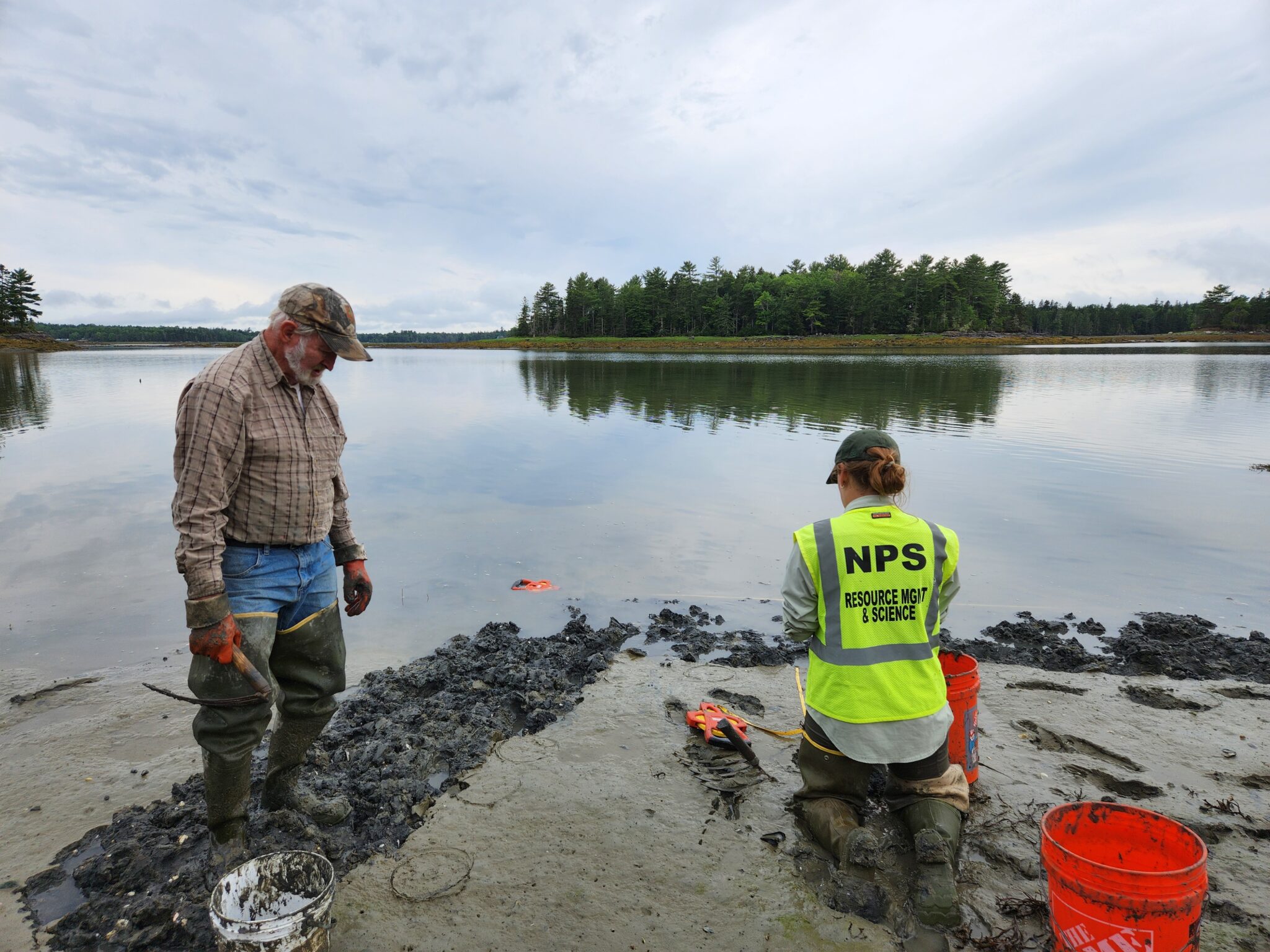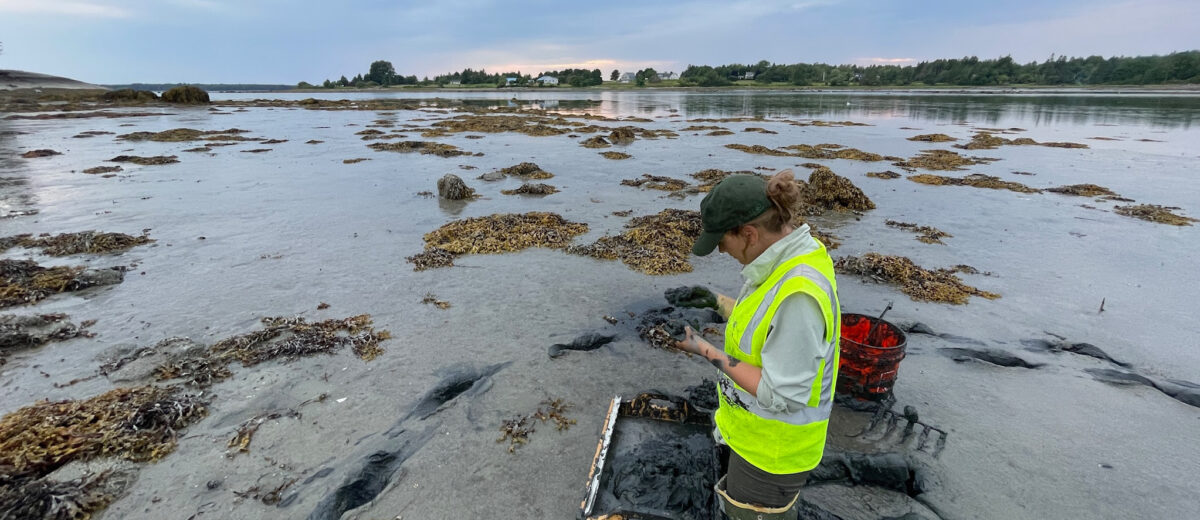by Zoe Brumbaugh, Scientists-in-Parks Intern
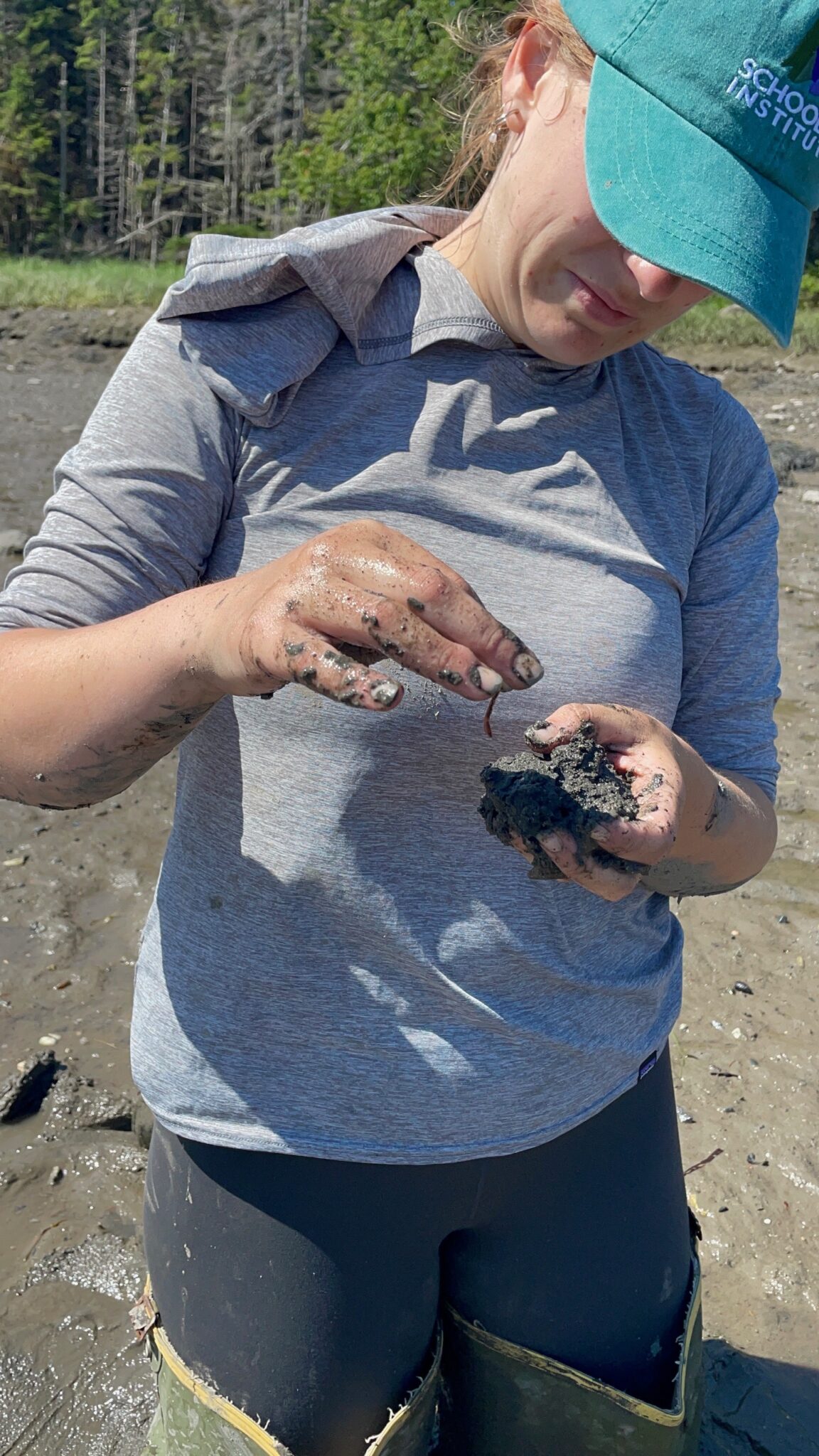
It’s sunrise, approaching 5 a.m. Your brain is finally starting to wake up after the hour drive over to the island. You gather your gear and head out away from shore. After only a few steps, you start to feel your hip-high waders sinking in. First only to about an inch, then maybe up to your ankle. After a few more squelching steps, you’re into your knees. You’ve made it to the mud.
This is how I spent a good deal of my summer here in Acadia as a Scientists in Parks (SIP) Ecology Assistant: in the mud, at seven different mudflat (“soft sediment”) sites within and around the park, surveying for two species of marine worms: the sandworm, Alitta virens, and the bloodworm, Glycera dibranchiata.
Ecologically, sandworms and bloodworms are important players in mudflats, as both predators and prey, and as indicators of broader ecosystem health. They’re also a harvestable resource. Maine is one of the only states in the country with a commercial marine worm industry, bringing in more than $7 million of revenue in 2023 and employing more than 500 licensed harvesters.
Unfortunately, in recent years, the populations of both the sandworm and bloodworm have experienced significant declines, putting both the natural communities they’re a part of, and the people who rely on them for their livelihoods, in danger. That’s why students, scientists, and managers in Acadia have been working with harvesters over the past several years to understand the abundance, distribution, and population structure of worms throughout the park.
When I first got here and learned about the project I would be working on, I could have been described as less than thrilled. While I do love intertidal marine invertebrates, I really preferred the rocky intertidal zone (not as much the mud). And worms? They were one of my least favorite types of ocean creatures.
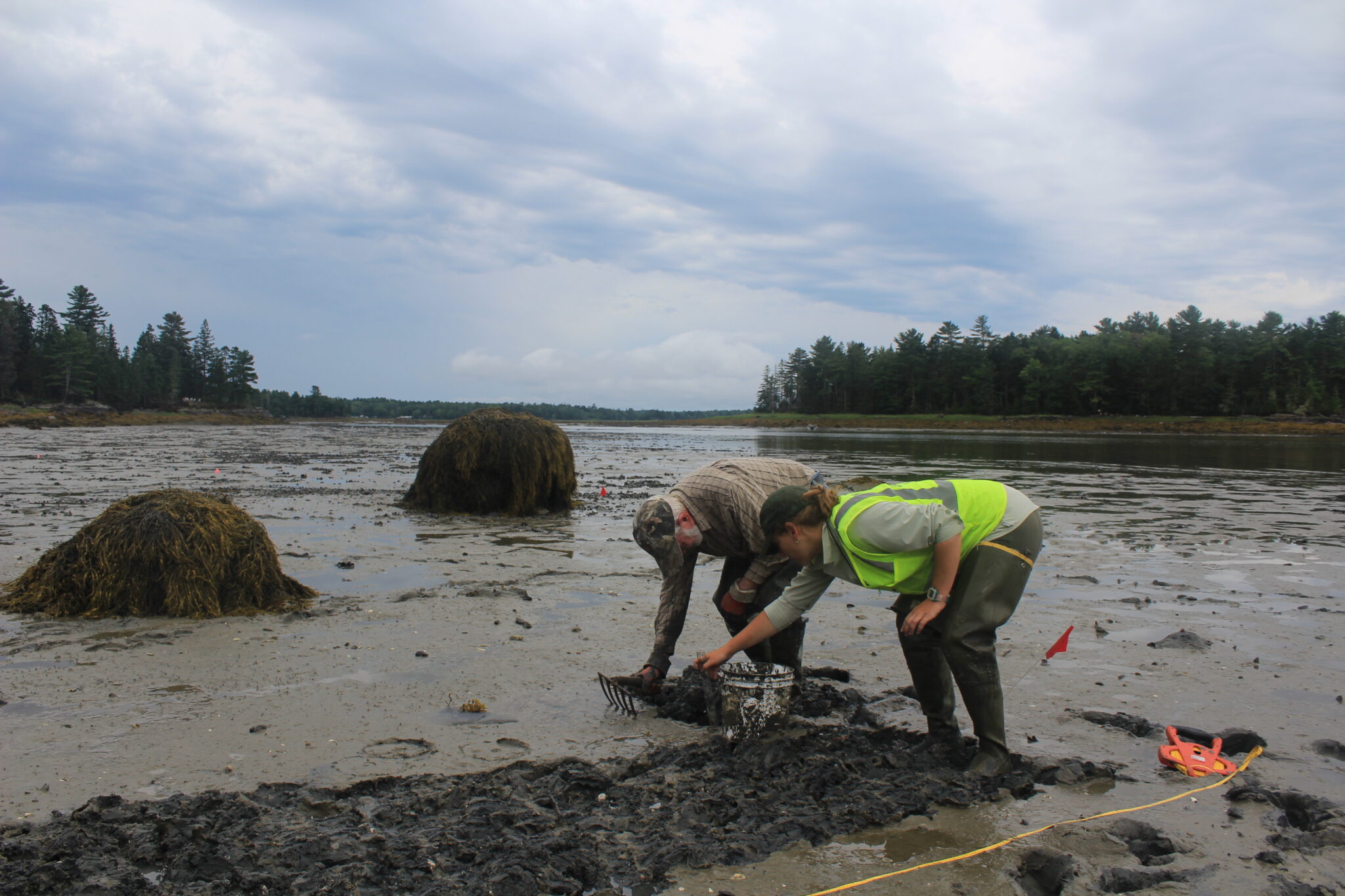
My feelings changed when I made it to the mud and met Fred Johnson, a Schoodic Institute research associate and community partner. Fred started worming in this area when he was only seven years old, and continues to do so, now with more than 60 years of experience. Fred was my liaison to the mud this summer, teaching me and my fellow interns everything from how to differentiate between different species or how to use our worming tools, to how to clean off our boots at the end of the day. Many of our days with Fred consisted of a lot of exploration, trying out new things, listening to his stories and advice, and asking loads of questions.
Through all the days out in the mud, I found myself learning a lot, my appreciation for the beauty of soft sediment systems growing.
To my surprise, the most impactful things I learned came from my interactions with Fred, and have centered around the value and best practices of community science.
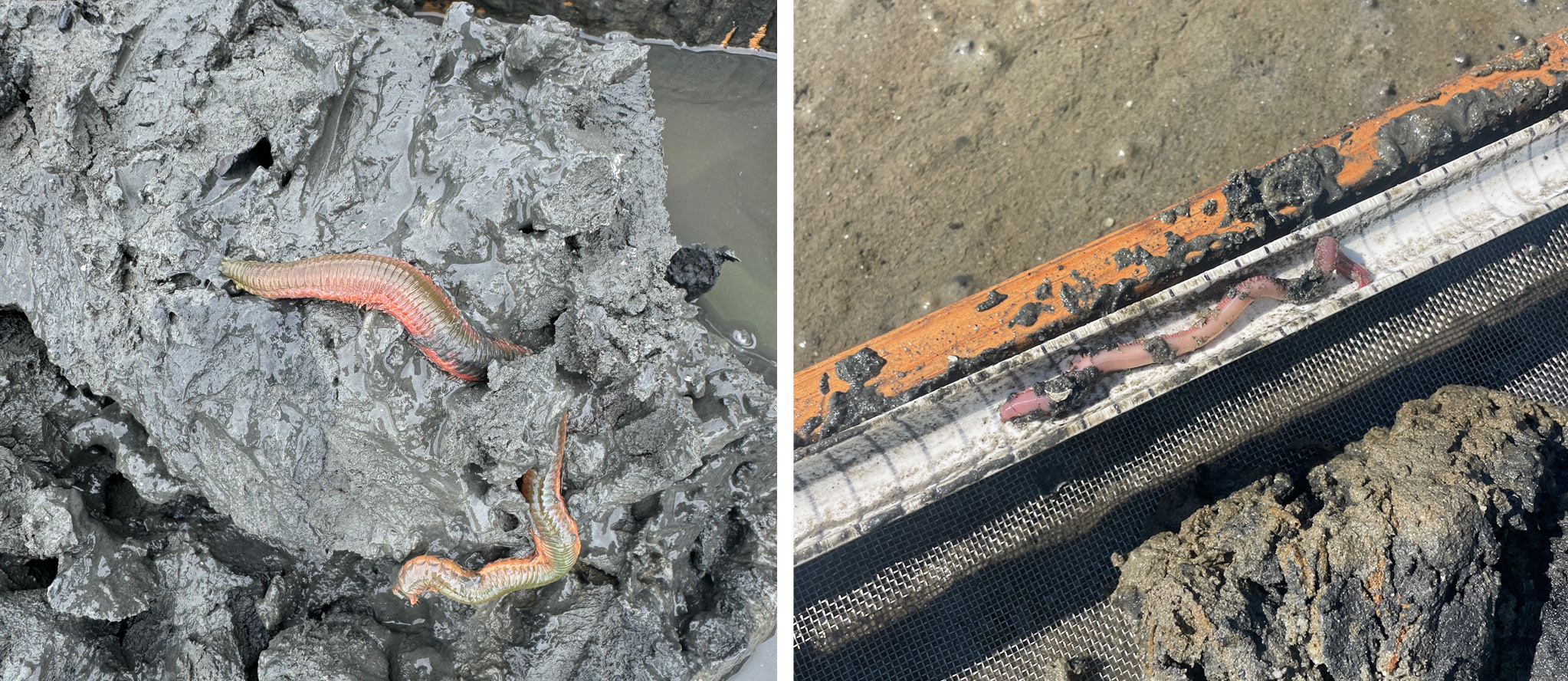
I’ve been calling these my “lessons from the mud.”
- Capturing and considering local knowledge is important.
While listening to Fred’s stories, I was frequently in awe of the immense amounts of natural history information he has for this area. His 60+ years of anecdotal stories hold valuable information about the conditions of mudflats, and the species that inhabit them, from decades earlier. As we move toward a climate future that is ever-changing, it is important to capture as much information about the past as possible to help us inform decisions in the times ahead.
- Conservation by use and preservation
College courses in Conservation Biology and other subjects left me with a pretty strict preservationist perspective. I thought the only good thing humans could do for nature was to leave it alone, and that a park’s role was to guard natural spaces from human influence.
But here, I learned how someone can care deeply about a system, such as mudflats, and an organism, like marine worms, and at the same time rely on them for a livelihood. And that a livelihood process, such as worming, can work alongside and in collaboration with conservation. These experiences have expanded my mindset and encouraged me to not shy away from needed conversations about the virtues and place for both approaches.
- Value of dialogue: science outreach and engagement are a 2-way street
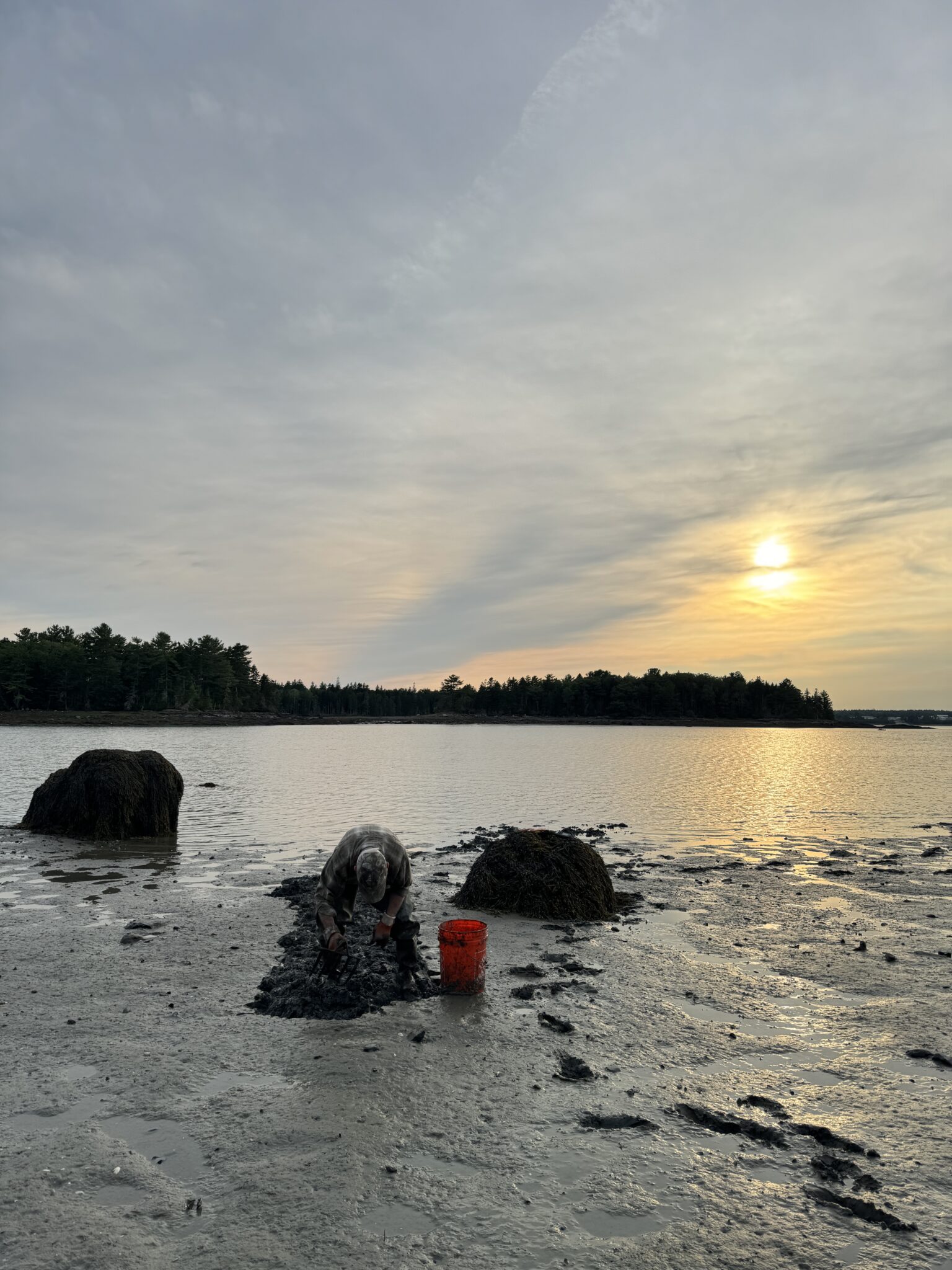
Fred Johnson digs for worms. Photo by Zoe Brumbaugh
The scientific community talks a lot about the need for improved engagement and outreach, as a way of bridging the gap between people and the natural world, establishing trust in science, and encouraging participation. Often, the solutions relate to better science communication, or sharing the work that scientists are doing. And while this is needed, my experiences this summer have reaffirmed to me that an equally important part is listening to the people who live in the communities that surround our study systems, and to their priorities.
Fred spoke with great reverence for park employees, managers, and scientists who had taken the time to have conversations like these with him, even if they did not always share the same opinions.
Listening also makes the science better. This summer, we were able to develop a protocol that combined our surveys with Fred’s traditional harvesting methods to get a more accurate picture of the mudflats we were studying.
- Worms – not so bad!
One last take away from the summer was: worms aren’t so bad! Through the many hours of surveying I came to love their personalities, beauty, iridescence, and place in our world. I’m thankful for all the mornings and nights spent out in the mud looking for them, and the many lessons that those times taught me.
